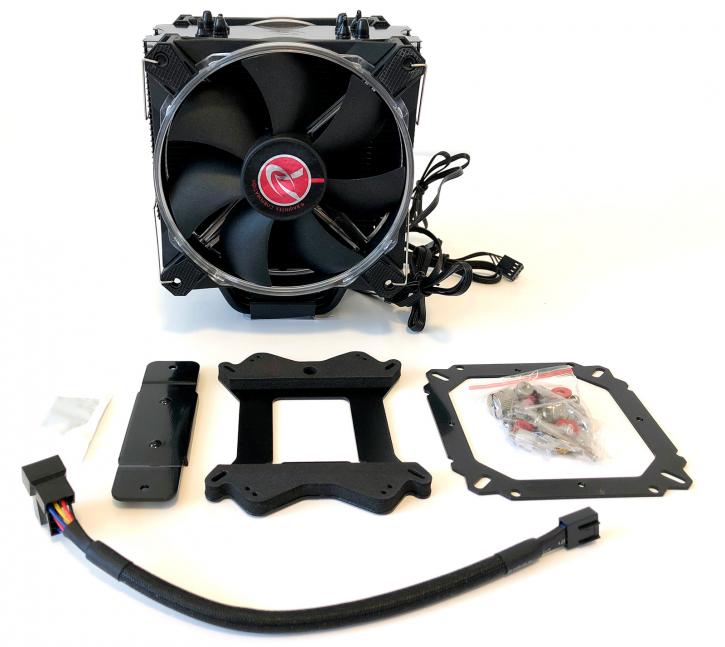Unboxing
Unboxing the Lil' Leto.
As is the tradition here, we begin with an overview and unboxing of the product. The packaging itself is fairly plain, but given the cheaper price point of this unit, I really don't mind. That's not to say the box's appearance is bad, however, and straight away we are left in no doubt as to what this unit will look like. Picture of unit, name of unit. Job done. Turning the box over we see more of the same. A photo of the unit, along with some straight up specs of the cooler and what you can roughly expect. You'll notice a near total lack of marketing material, and I think this is very much to do with both where Raijintek is from (as a company). Raijintek are a German firm, and as a whole marketing in Europe tends to be somewhat different or more subtle than elsewhere on the globe. That aside, this cannot be translated into 'Rajintek have no faith in their product,' because that cannot be the case. It's just no frills, very much like another two European based cooling/parts firms... Noctua and Arctic, anyone?
Cracking open the box, we see that the 'no frills' approach continues on the inside. Having a good unboxing experience is always a positive, but this isn't a bad first impression. It's basic, but let's not forget that the product only costs 30-40 GBP/EUR, so I wasn't expecting Apple, either. The cooler is nestled between two foam pads that protect the cooler's sides. This is basically all that's needed, as the cooler isn't massively heavy (though to be fair, there is definite heft). A manual is slotted down the side of the box, and all relevant mounting hardware (AM4 included, naturally, as it should be at this point in time). There is also some included thermal paste, though I will be testing with my own Thermal Grizzly Kryonaut for all tests, as that was what was mounted on my NH-U12S when I started working for and doing reviews for Guru3D. To those new builders, however, having some either pre-applied or included in the box is always welcome.
Taking the cooler out of the box, we get an appreciation for how it looks. I've said this before, but Raijintek has built a very good looking cooler here. I would argue that aesthetics don't really matter, but in a day and age of tempered glass cases and RGB SSD's, it would appear that looks certainly do matter a great deal, so to see a good looking cooler at this budget is a great touch. I have no doubt that the black coating on the fin array helps this a tonne, as I think this cooler in plain aluminum would be entirely 'meh.' Just goes to show what effect a little additional detail can have. Taking a close look at the fin stack itself, we can see that it's actually not that dense, therefore revealing why Rajintek can get away with a significantly lower static pressure fan. Well, that is my theory.
RAM compatibility will not be an issue for this unit. Raijintek has seen to that with some cutouts at the base of the unit. This is appreciated. I will never know, of course, but maybeRajintek could have squeezed an extra couple of degrees of performance by not doing the cutouts? That is the price one pays for 100% compatibility, however, so swings and roundabouts.
The top of the heatsink has a simple stamped Rajintek logo on it, along with the four protruding ends of the heatpipes. It carries on the 'simple' theme of this cooler, and whilst some companies have started to look into LED illuminated top logos and custom brackets (e.g. Noctua's 'Chromax' product line), I would argue that this approach is absolutely fine for a price point between 30-40 GBP/EUR. If we flip the cooler over onto its... back? We can see the base plate's CDC design. The heat pipes are actually separated by a small gap of I presume nickel-plated copper plate, rather than be a continual line of interweaving pipes.
Next, we'll take a final look at the cooler's smaller points, the fans, as well as an overview of its installation process.






